Gears up for bus industry growth with a focused approach
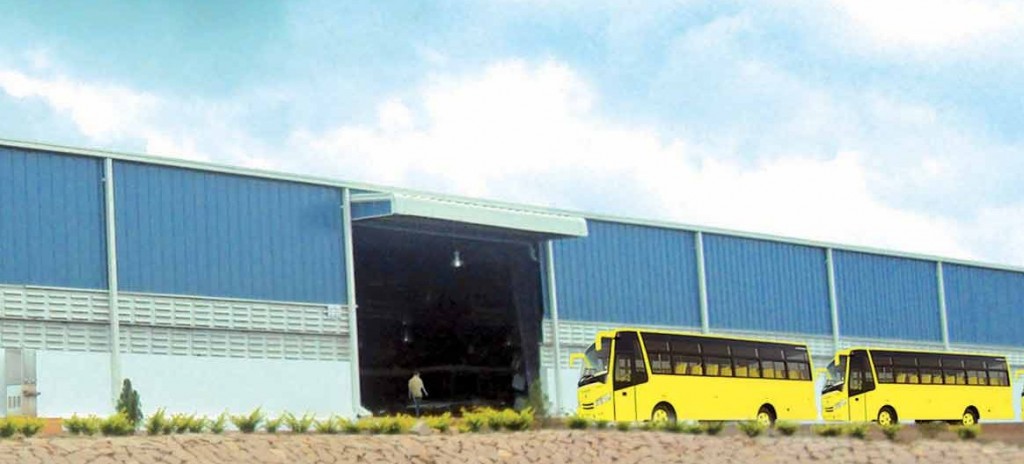
Established in 1980, the MG Group was promoted by Mr. Mohan Kamat who made a foray into the bus building segment in 1996 with MG Automotives Pvt. Ltd., and Alma Motors Pvt. Ltd. in 2004. The group manufactures staff buses, school buses, executive buses, luxury buses, special-purpose products like ambulances, delivery vans, defence vehicles and other custom-designed vehicles.
The MG Group also has other business divisions, including transportation solutions, design & engineering services, alternate energy, electronics, healthcare, food & beverage and luxury furniture & artifacts.
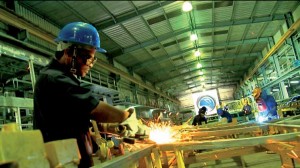 MOTORINDIA caught up with Mr. Anil M. Kamat, Executive Director, MG Group, at the company’s bus building facility at Zaheerabad for an exclusive update.
MOTORINDIA caught up with Mr. Anil M. Kamat, Executive Director, MG Group, at the company’s bus building facility at Zaheerabad for an exclusive update.
The MG Group made its presence felt at the 2010 edition of Busworld India where it had showcased a new range of buses that received excellent response. Ever since, the company has seen very good growth with solid OEM collaborations and a good number of private customers as well. The company has interesting new products on the anvil, including a flagship sleeper variant.
While 2012 has been a challenging year for the Indian bus industry, the MG Group has done quite well, driven by the good performance in the retail segment of its own models such as the Leo, Onyx, Skylark, Scholar and Feeder. With new developments underway, the company is confident that it would cross its annual production target of 10,000 buses in the next financial year.
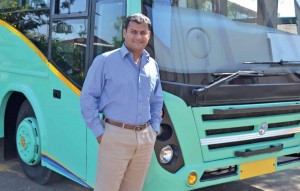 The MG Group has two facilities for bus building, one at Zaheerabad in Andhra Pradesh for MG Automotives Pvt. Ltd., and the other at Belgaum in Karnataka for Alma Motors Pvt. Ltd., with a total area of five lakh sq. ft. Committed to providing total mobility solutions to its customers, the group has a strong design and development team, a key contributing factor to its market success. It has a dedicated design centre at both its plants, apart from fully-equipped product development shop, multiple paint booths, pattern- and mould-making shop, quality lab and in-house tool room. The facilities also manufacture seats and fibre-glass products for captive consumption. While its Belgaum facility is ISO 9001:2008 certified, TS 16949 certification of the Zaheerabad plant is underway.
The MG Group has two facilities for bus building, one at Zaheerabad in Andhra Pradesh for MG Automotives Pvt. Ltd., and the other at Belgaum in Karnataka for Alma Motors Pvt. Ltd., with a total area of five lakh sq. ft. Committed to providing total mobility solutions to its customers, the group has a strong design and development team, a key contributing factor to its market success. It has a dedicated design centre at both its plants, apart from fully-equipped product development shop, multiple paint booths, pattern- and mould-making shop, quality lab and in-house tool room. The facilities also manufacture seats and fibre-glass products for captive consumption. While its Belgaum facility is ISO 9001:2008 certified, TS 16949 certification of the Zaheerabad plant is underway.
With the second JnNurm scheme expected next year, the MG Group is gearing up for the huge demand which would follow. Says Mr. Anil M. Kamat: “We are expanding our capacities in order to be able to cater to the upcoming JnNurm scheme. Currently, we have a total capacity of 14,000 vehicles at our plants in Zaheerabad and Belgaum and will be upgrading the same to about 20,000 in the next six months. We would like to avoid a situation where we will be running short of space or capacity towards catering to our OEM customers.”
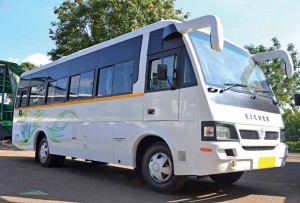 With the impending JnNurm scheme, including tier II and tier III cities, the MG Group, being part of the organized bus building industry, is hopeful of bagging big orders through the scheme. The effective implementation of the much-talked-about bus code would also be a shot in the arm for the organized sector and would certainly benchmark basic standards in the Indian bus industry.
With the impending JnNurm scheme, including tier II and tier III cities, the MG Group, being part of the organized bus building industry, is hopeful of bagging big orders through the scheme. The effective implementation of the much-talked-about bus code would also be a shot in the arm for the organized sector and would certainly benchmark basic standards in the Indian bus industry.
The first JnNurm scheme played a major role in upgrading the standard of buses in the country in terms of air suspensions, electronic destination boards, multiplex wiring systems and other features. It would be interesting to follow what JnNurm II could contribute towards further raising the standard.
When it comes to technology, the MG Group has lofty plans up its sleeve. It will be presenting its technology solutions such as LED lighting, destination boards, multiplex wiring systems and audio-visual systems under a new brand called MG Grey Engine.
Mr. Kamat observes: “The whole idea of MG Grey Engine is to innovate in the field of automotive electronics, which by itself has become an important part of the automotive industry. MG Grey Engine will offer a variety of new products which would greatly benefit the Indian auto industry.”
While GPS tracking system in school buses is a good example of technology in buses, MG Grey Engine products could go a long way in developing the country’s bus industry.
Strong presence in OEM segment
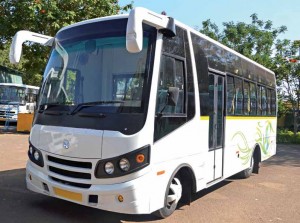 The MG Group is known for its strong presence in the OEM segment which usually sees surges in demand during specific periods. For instance, school buses are in demand when schools reopen after the annual vacation, while other vehicles such as ambulances and defence vehicles attract attention when there are government tenders.
The MG Group is known for its strong presence in the OEM segment which usually sees surges in demand during specific periods. For instance, school buses are in demand when schools reopen after the annual vacation, while other vehicles such as ambulances and defence vehicles attract attention when there are government tenders.
The company schedules its production plans accordingly, so that it would be able to meet the OEM demands on time and also have due focus on its own retail models. Currently it sells close to 250 vehicles from its own model range each year and is targeting doubling the number next year.
The group also has a series of special vehicles in its stable, including a mobile dental clinic and a mobile cancer diagnostic centre which were developed for a dental college and a cancer-related NGO respectively. It has also made a special mobile diagnostic centre for the Hinduja Foundation.
APSRTC has been one of MG Group’s largest and most esteemed STU customers over the years. Recently, the company has designed and developed two new models for APSRTC, including an air-conditioned super-luxury variant named Indra. “We have a very good relationship with APSRTC and work very closely with them. We are glad that the entire team at APSRTC is open to ideas and innovations through new models and variants. We support them in the design and engineering of new models and deliver tailor-made products to suit their requirements”, says Mr. Kamat.
Sleeper coaches are another area of focus for the company, as it plans to unveil around three new variants for its customers in the near future, including its flagship model in the sleeper segment. One can expect high quality standards in MG’s sleeper variants which would have plush interiors with a host of additional features to give passengers a home-like feel inside the vehicle. With passengers ready to pay a premium for better quality and comfort, the company is planning to sharpen its focus on the luxury coach segment in the next financial year. Also, with more variants such as sleeper, semi-sleeper and sleeper-cum-seater growing in popularity, the demand for customized vehicles is on the increase.
While many Indian companies have opted to take the integral coach route, MG Group is not that keen on joining the trend. Mr. Kamat says: “I have visited bus companies in other countries that offer fully-built coaches, including the chassis and powertrain, while the customer can select the engine, transmission, axles and other aggregates. But I feel the Indian market is not fully ready for such a shift mainly due to the high reliance, dependence and confidence on OEMs. Moreover, the homologation and validation processes would take a huge amount of time and cost.”
Exuding optimism
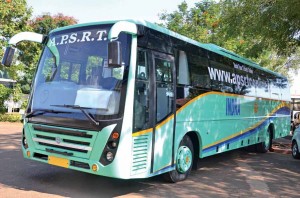 The MG Group is likely to achieve a turnover of Rs. 500 crores in the fiscal year 2012 and is aiming for a 20 per cent growth in the subsequent fiscal year. Moving forward, the company is highly confident that the market will witness a huge growth in demand for good quality buses. Though the current Indian bus industry scenario might not be the brightest, it is encouraging to note that the industry has witnessed a huge developmental transition in the last decade. “There has been a significant shift from manual to automatic transmission in intra-city applications while another trend is the shift from front-engine to rear-engine buses. The quality of buses has improved a lot and it is also the way forward for the industry”, he says.
The MG Group is likely to achieve a turnover of Rs. 500 crores in the fiscal year 2012 and is aiming for a 20 per cent growth in the subsequent fiscal year. Moving forward, the company is highly confident that the market will witness a huge growth in demand for good quality buses. Though the current Indian bus industry scenario might not be the brightest, it is encouraging to note that the industry has witnessed a huge developmental transition in the last decade. “There has been a significant shift from manual to automatic transmission in intra-city applications while another trend is the shift from front-engine to rear-engine buses. The quality of buses has improved a lot and it is also the way forward for the industry”, he says.
With growing vehicle population and traffic congestion, greater use of public transportation is just unavoidable. As the Government works on new reforms and infrastructure development, it would be interesting to keep track of the growth of the bus segment which is perhaps the most efficient means of public transportation in the country.
“Overall, the future of the Indian bus industry looks very positive and encouraging. Moreover, with many new players coming in, the entire automotive industry has become very exciting. There is a lot to be offered to our customers, and we feel the bus industry is the right place to be in during such an interesting phase”, concludes Mr. Kamat on an optimistic note.